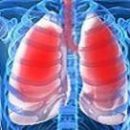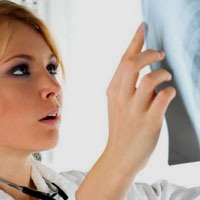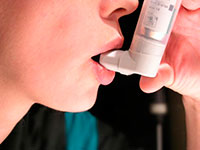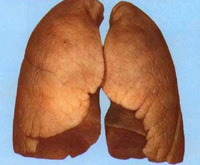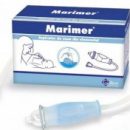Cardiogenic or negrodiogenic, toxic or allergic, lightningry or protracted - swelling of the lungs are different. Their classification depends on the reasons that caused edema, from time to which edema develops, from its symptoms. Edems are different - but the danger is always alone, the threat to life.
Content
In most cases, leading to edema, in most cases, either hemodynamic violations are usually due to pathology or acute heart overload (cardiogenic edema), or diseases such as pneumonia, sepsis, aspiration of gastric content or injury (negrotogenic email swelling), or alveolocapillary damage membranes toxic substances (toxic pulmonary edema), allergic reaction products (allergic pulmonary edema), due to hypoxia; Often develops in patients with brain damage. Sharp disorders of metabolic processes in the body in the absence of treatment of pulmonary edema lead to the death of the patient.
The acute pulmonary edema is isolated, which is developing in 2-4 hours, and the tightening swelling of the lungs, developing for several hours and sometimes lasts a day or more, as well as the lightning form of lung edema, in which the fatal outcome occurs in a few minutes from the beginning of its development ( For example, with acute myocardial infarction).
 Symptoms are usually very informative. Dyspnea alone is slightly facilitated in the patient's position sitting or standing and enhanced with the slightest physical tension. Patients complain of constraint in the chest, a shortage of air, sometimes on dizziness, general weakness. Dyspnea may occur sharp in the form of an attack of cardiac asthma. The skin of the face and the torso is usually pale, excessively wet, hard breathing is revealed, sometimes dry buzzes (with cardiac asthma), but there are no wet wheems. Tachycardia is celebrated. All these symptoms point to the interstitial swelling of the lungs (the initial stage, when the liquid accumulates in the lung tissue).
Symptoms are usually very informative. Dyspnea alone is slightly facilitated in the patient's position sitting or standing and enhanced with the slightest physical tension. Patients complain of constraint in the chest, a shortage of air, sometimes on dizziness, general weakness. Dyspnea may occur sharp in the form of an attack of cardiac asthma. The skin of the face and the torso is usually pale, excessively wet, hard breathing is revealed, sometimes dry buzzes (with cardiac asthma), but there are no wet wheems. Tachycardia is celebrated. All these symptoms point to the interstitial swelling of the lungs (the initial stage, when the liquid accumulates in the lung tissue).
With an alveolar edema (the subsequent heaving stage, when the fluid is already in the lumen of the alveoli) which can develop very quickly, sometimes as if suddenly (for example, during sleep), the patient has sharply progresses shortness of breath, developing in the suffocation, the respiratory frequency increases to 30- 40 per minute, on the face there are abundant droplets of sweat, there is a blue language, the skin becomes a grayish tint. Heavy breathing is interrupted by a cough, the abundant foam is distinguished, often pink (blood) wet. Patients are excited, fear of death.
In the chest over the entire surface of the lungs, the fine-pushed, subsequent solubular wet wets with the predominance of large-referred; There appears bubbing in large bronchops and trachea, audible at a distance (bubbling). Tachycardia increases, sometimes the tones of the heart are so muted that they are not able to listen because of noisy breathing. The pulse becomes small and frequent, blood pressure tends to reduce, and the emergence of edema of the lungs on the background of vascular failure aggravates it up to the development of heavy collapse. The diagnosis is confirmed by X-ray study.
In general, treatment consists of:
- giving a patient of a comfortable half-time or sedental position (except for the combination of edema of the lungs with a heavy collapse);
- imposing venous harnesses on the hips to limit the influx of blood to the heart and light;
- Inhalation of oxygen through a mask or nasal catheter
- suction of foam and liquid from trachea and large bronchi, if necessary, the use of artificial respiration under pressure, that is, conducting resuscitation measures;
- complete elimination of pain syndrome (introduction of neuroleptics);
- Correction of heart rate disorders;
- correction of acid-alkaline equilibrium disorders (combating acidosis);
- electrolyte balance correction;
- Reducing the hydrostatic pressure in the vessels of a small circle of blood circulation (injected by narcotic analgesics that, coal respiratory center, reduce shortness of breath, reduce the venous influx and blood pressure, remove the alarm and fear of death);
- reducing the venous inflow to the right ventricle (the introduction of gangliplockers);
- lung dehydration (diuretics, bloodletting);
- strengthening the contractile ability of myocardium (cardiac glycosides are introduced - stanfantine);
- Restoration of respiratory tract.

